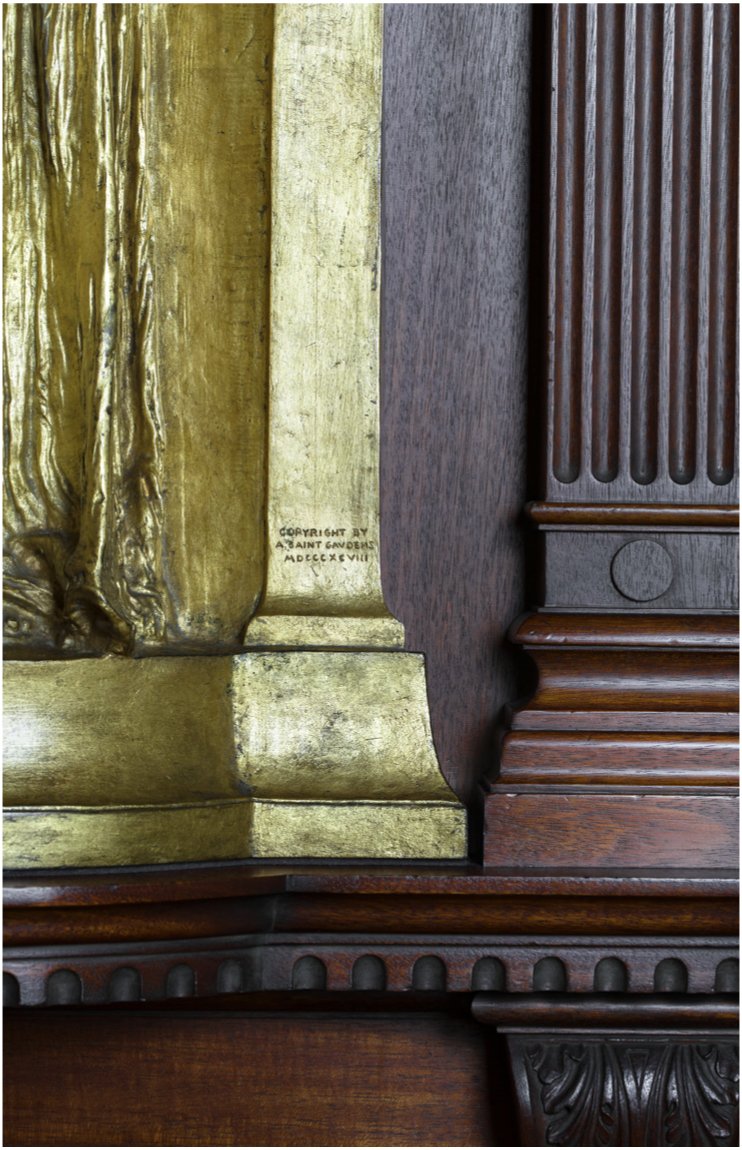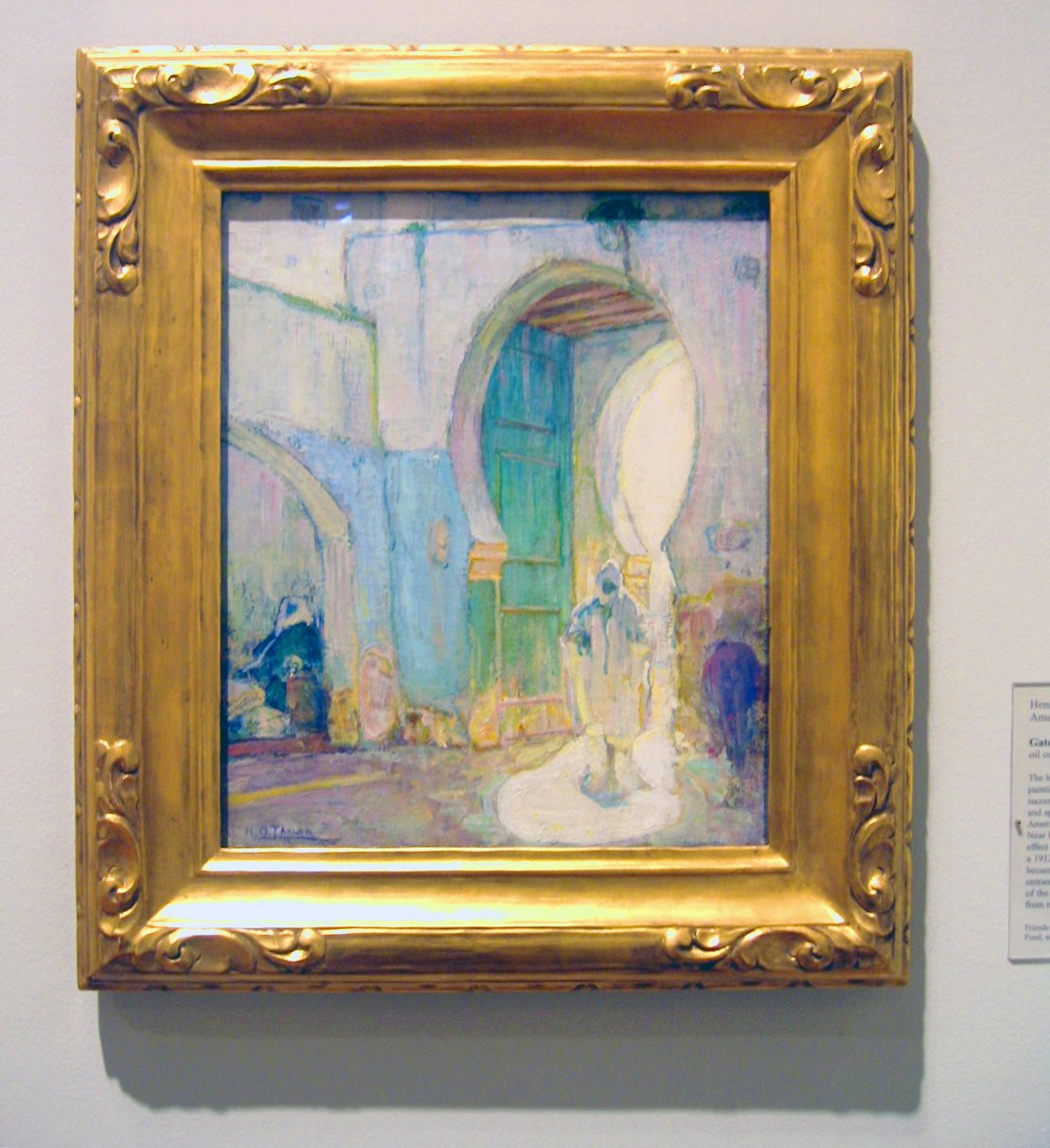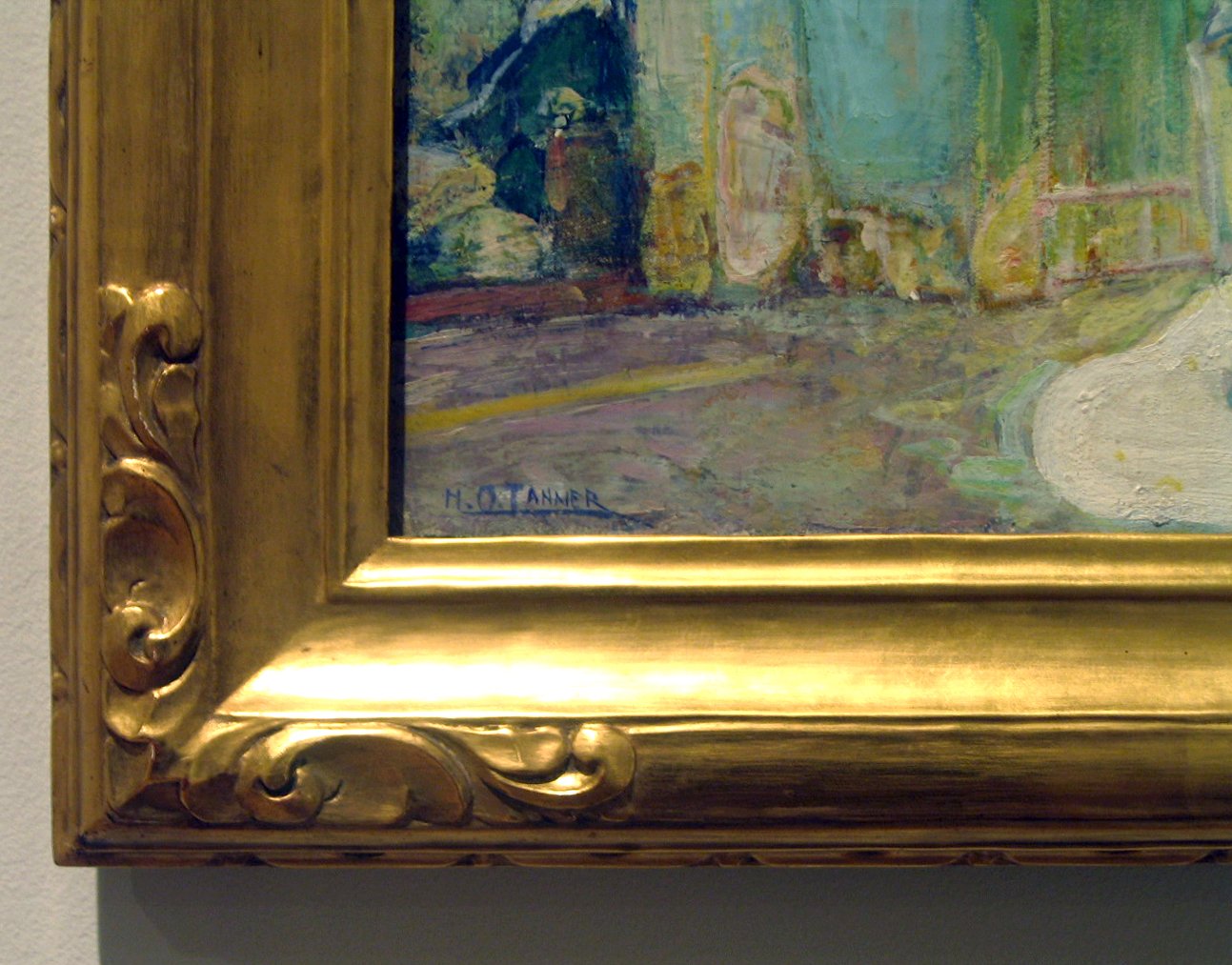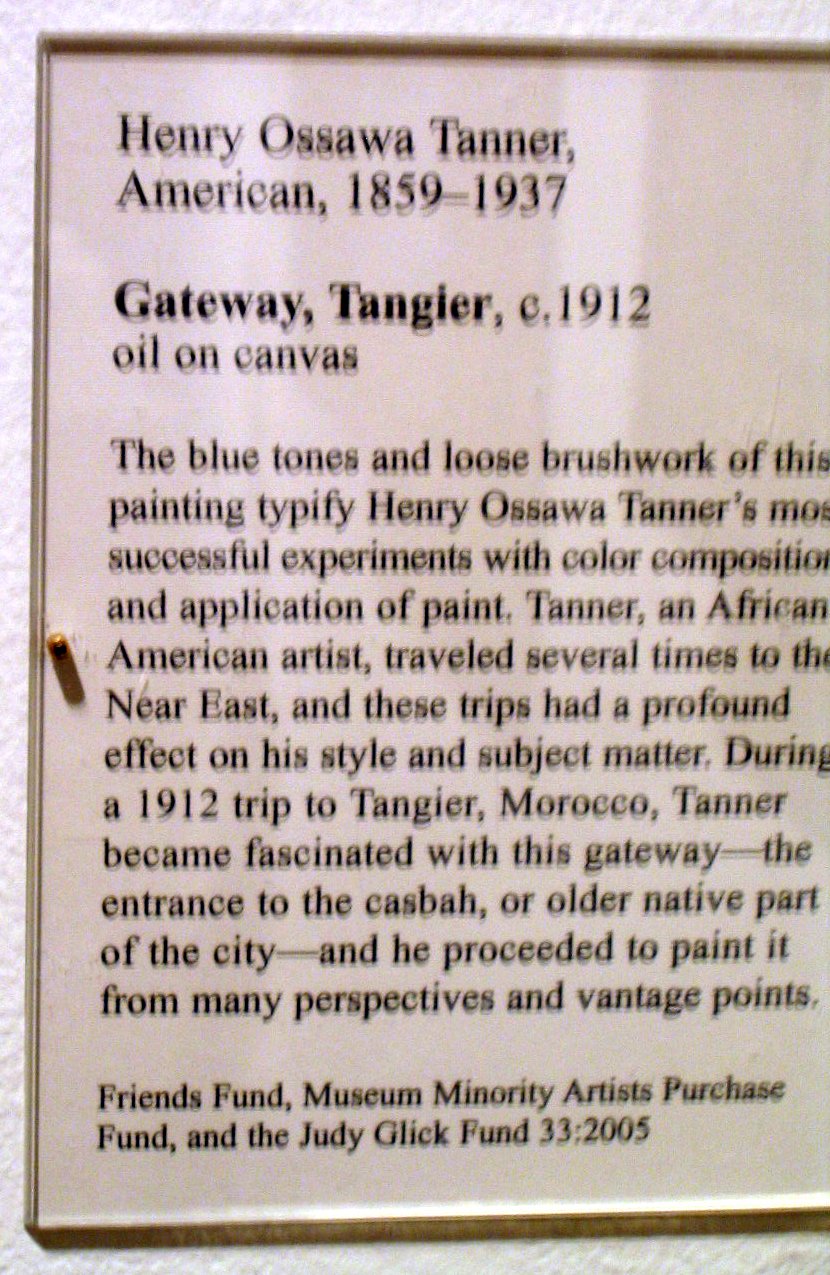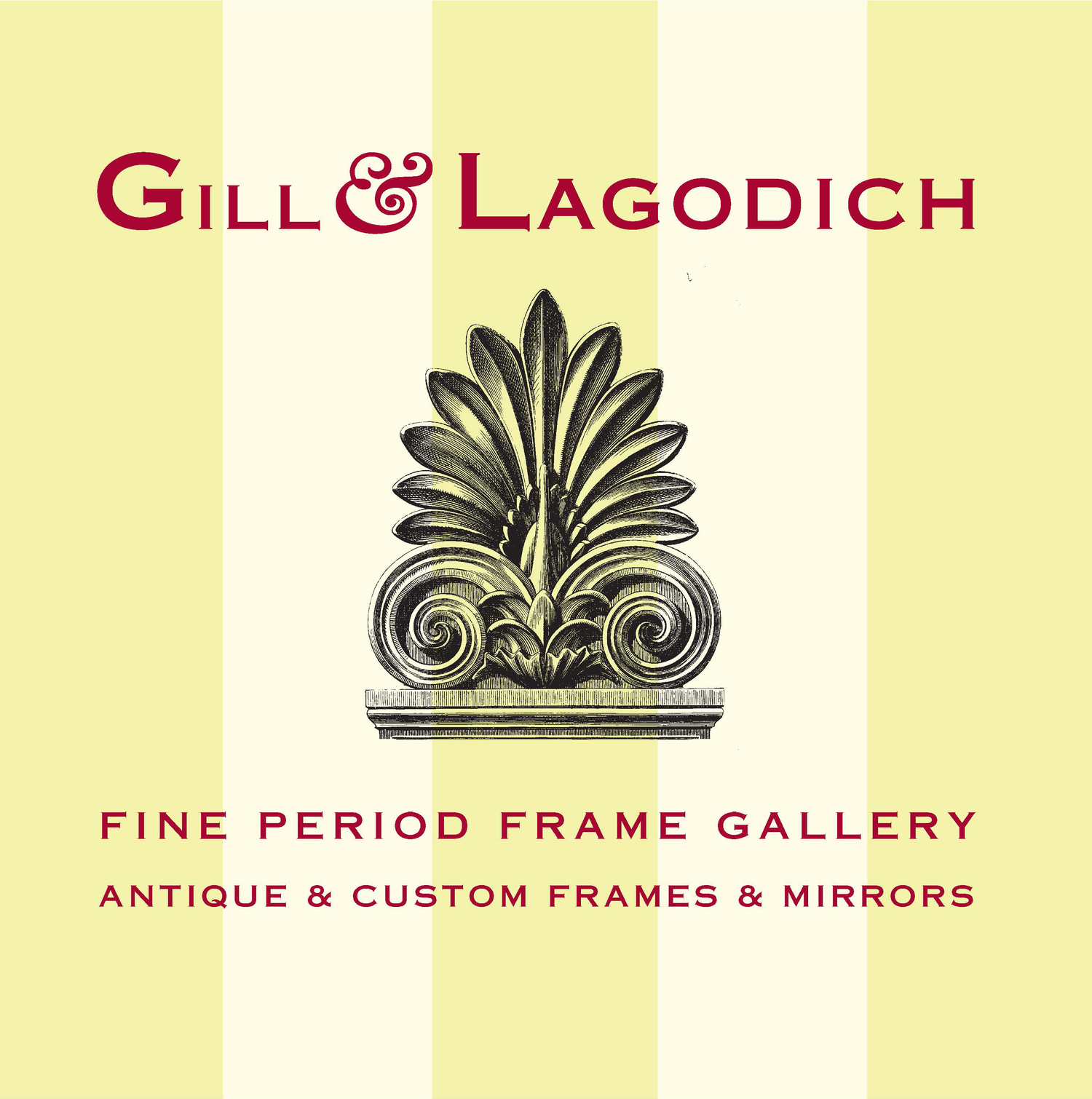SAINT LOUIS ART MUSEUM, MISSOURI
Gill & Lagodich have provided period frames for the following paintings in the Saint Louis Art Museum (listed in alphabetical order): Edward Bannister, Woman Standing Near A Pond, 1880; William Merritt Chase, The Tenth Street Studio, 1880; John Rogers Cox, Cloud Trails, 1944; Thomas Eakins, The Fairman Rogers Four-In-Hand (A May Morning In The Park), 1899; Martin Johnson Heade, Newburyport Meadows, 1863; George Inness, In the Roman Compagna, 1873; Joseph Rusling Meeker, The Land of Evangeline, 1874; Henry Lewis, A Street in Saint Louis, 1863; and Henry Ossawa Tanner, Gateway Tangier, c. 1912.
Restoration of period frame original to Hannah Brown Skeele, Still Life with Strawberries, 1863.
Custom-made replica Stanford White mahogany tabernacle frame with hand-carved ornament, made for Augustus Saint-Gaudens, gilded bronze, Amor Caritas, 1898.
Please check back soon as we update images.
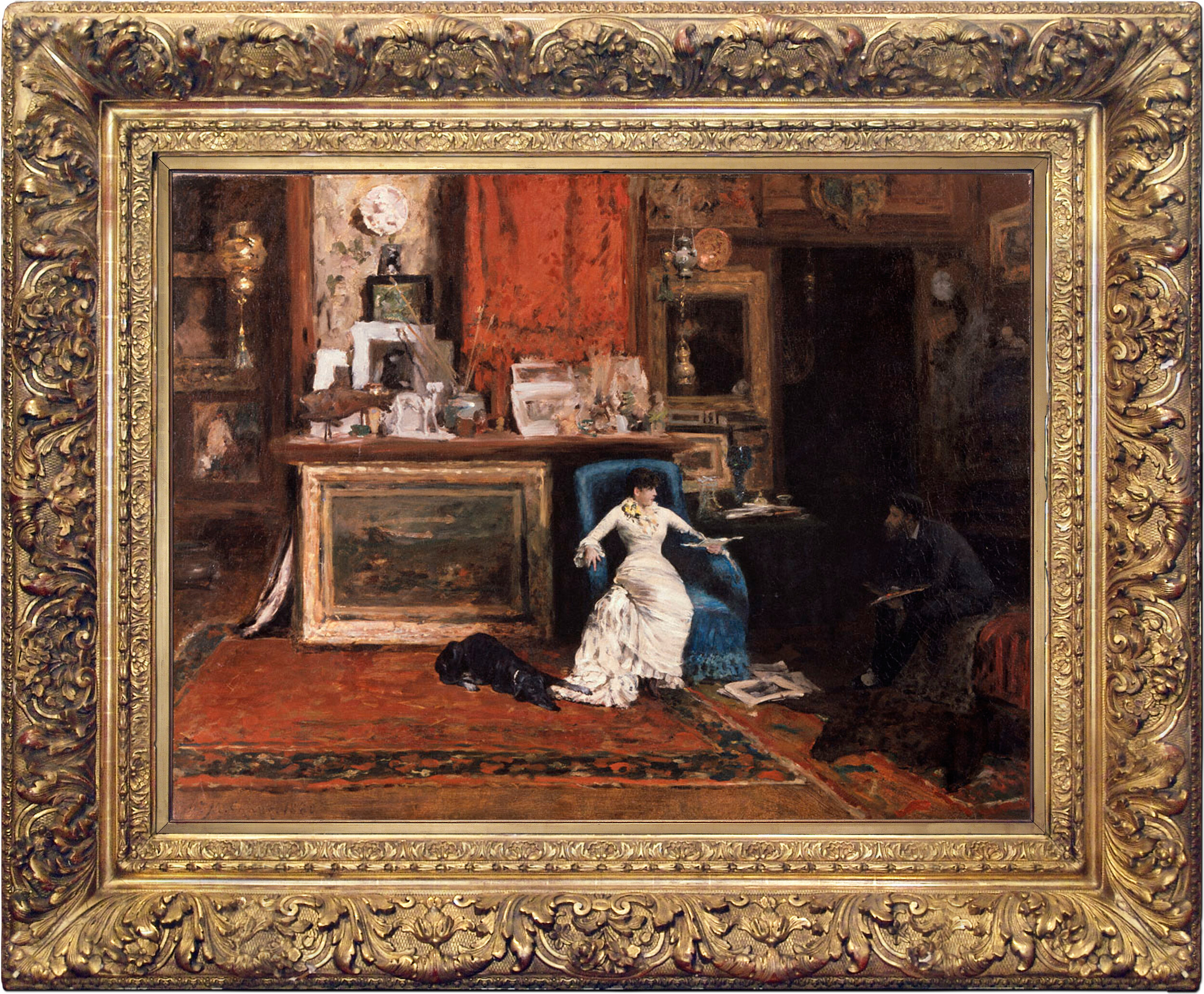
WILLIAM MERRITT CHASE (1849–1916)
The Tenth Street Studio, 1880, oil on canvas, 36-1/4” x 48-1/4”. c. 1800s French Barbizon frame, gilded cast ornament on wood, molding width 9 in. “Sumptuous tapestries, exotic metalwork, imported porcelains, fine art, and elegantly adorned patrons were sure to be found in the studios of artists at the end of the 19th century. This painting depicts the studio of its artist, William Merritt Chase, one of the most successful painters of the era. Appreciating—and being seen appreciating—such exquisite finery was an important cultural and social marker for both patron and artist. An invitation to a reception at Chase’s studio (sure to be in the society news) was the most sought after in New York City.” — museum collection label. Painting credit: Bequest of Albert Blair.
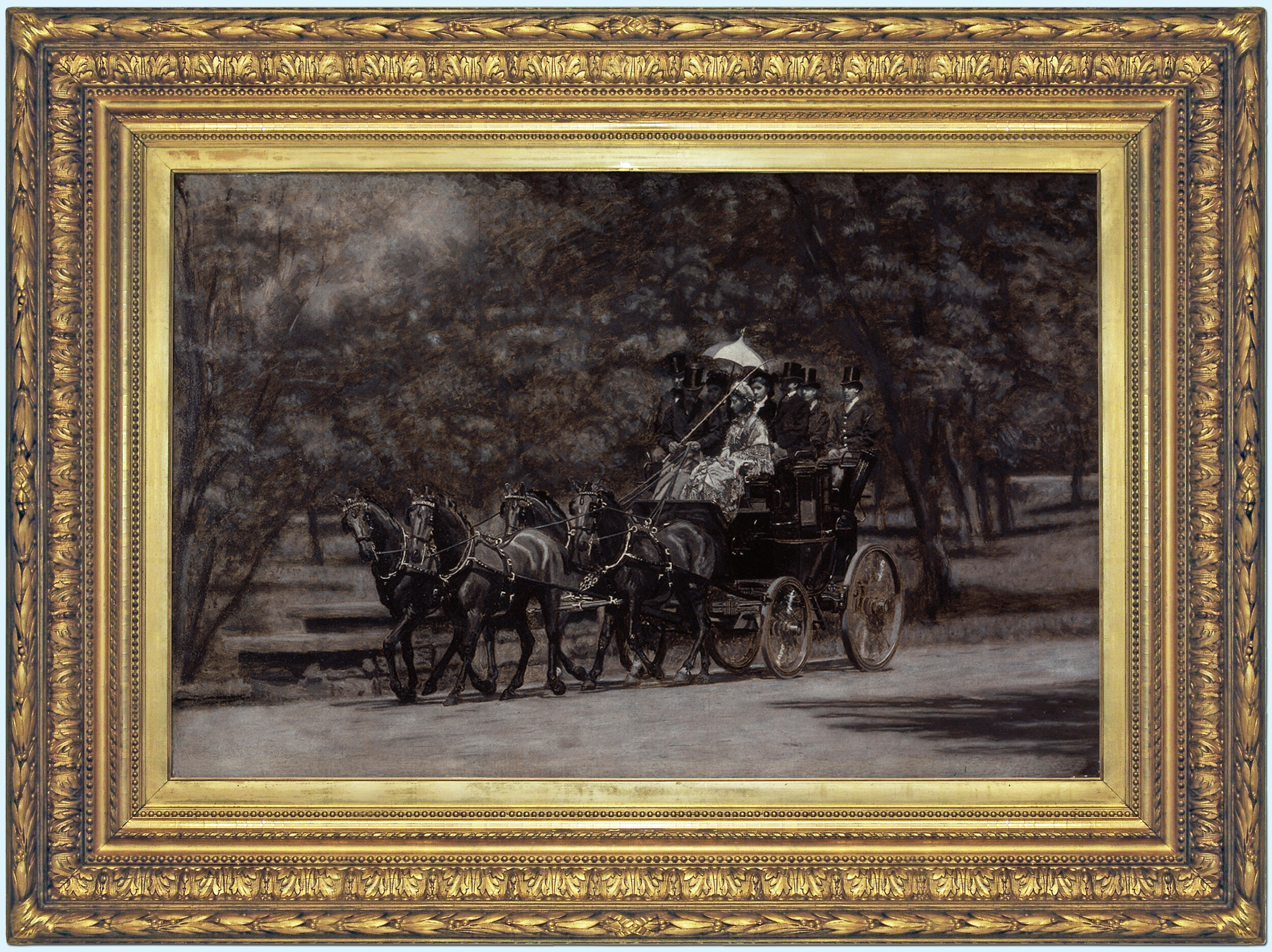
THOMAS C. EAKINS (1844–1916)
The Fairman Rogers Four-in-Hand, (A May Morning In The Park), 1899, oil on canvas, 24” x 36” 1880s American Barbizon painting frame, gilded applied cast ornament on wood, molding width: 6-3/8" "Thomas Eakins made this monochromatic painting nearly two decades after the original, entitled “A May Morning in the Park, had been commissioned by Fairman Rogers,” a prominent engineer in Philadelphia. Both men shared a fascination with the motion photography of Edward Muybridge whose photographs of galloping horses Eakins used while making the painting. Eakins painted this black and white version for an illustration in Rogers's book Manual of Coaching (1900)." — museum collection label.
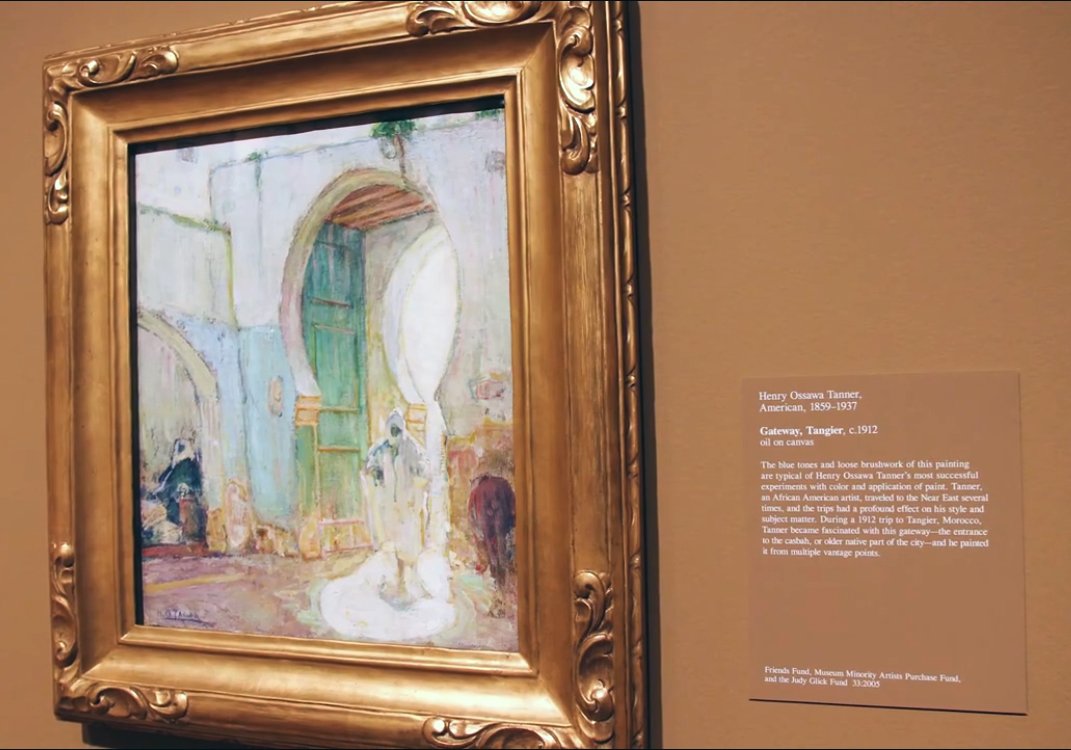
HENRY OSSAWA TANNER (1859–1937)
Gateway, Tangier, c. 1912, oil on canvas, 18-7/16 x 15-5/16 in. Framed by Gill & Lagodich, Period American Arts and Crafts frame, Walfred Thulin, Boston maker, gilded hand-carved wood, hand-carved signature verso THULIN 1254 19W24. “The blue tones and loose brushwork of this painting typify Henry Ossawa Tanner's most successful experiments with color composition and application of paint. Tanner, an African American artist, traveled to the Mediterranean region four times, and these trips had a profound effect on his style and subject matter. During a 1912 trip to Tangier, Morocco, Tanner became fascinated with this gateway—the entrance to the casbah, or the historic city area and fortress—and he proceeded to paint the gateway from many perspectives and vantage points.” — museum didactic label. Painting credit: Friends Fund, Museum Minority Artists Purchase Fund, and the Judy Glick Fund.
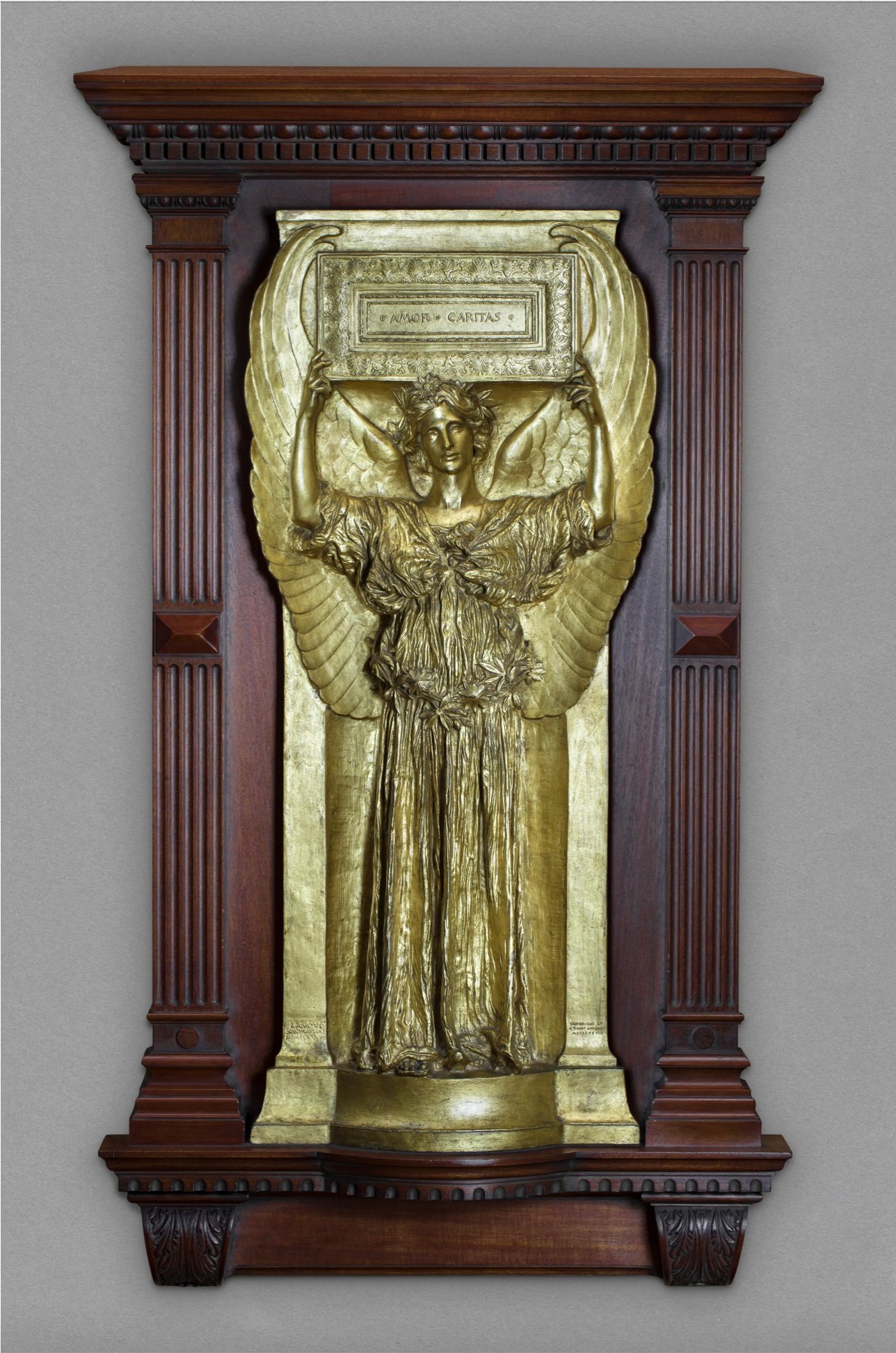
AUGUSTUS SAINT-GAUDENS (1848–1907)
Amor Caritas, 1898 (cast later), gilded bronze, 40-1/8 x 17-3/8 x 4-5/8 in. Tabernacle frame, carved Honduran mahogany with selectively oxidized patina; custom replica based on the Stanford White model on the Saint-Gaudens Amor Caritas bronze, Art Institute of Chicago. “Amor Caritas features a winged figure in a loose robe holding a text consisting of the Latin words for love and charity. The female figure is an example of the melancholy type Augustus Saint-Gaudens favored. In this case, the grave expression reflects the figure's origin as part of a tomb monument Saint-Gaudens designed. The artist created multiple versions of this subject, eventually marketing it as an independent piece.” — Saint Louis museum label “This angelic figure by Augustus Saint-Gaudens, a foremost sculptor of the Gilded Age, is the culmination of his portrayals of allegorical women. He made similar designs for the tomb of Edwin D. Morgan in Hartford, Connecticut, and the mantelpiece in the house of Cornelius Vanderbilt II in New York. Like many other late 19th-century artists, Saint-Gaudens often modeled angels to symbolize the traditional virtues of women. Amor Caritas (Love [and] Charity) probably depicts Davida Clark, the artist’s mistress. Saint-Gaudens brought a level of naturalism to his ideal figure, particularizing the facial features and rendering the drapery so that it suggests the human form beneath.” —Art Institute Chicago label (original frame model)
